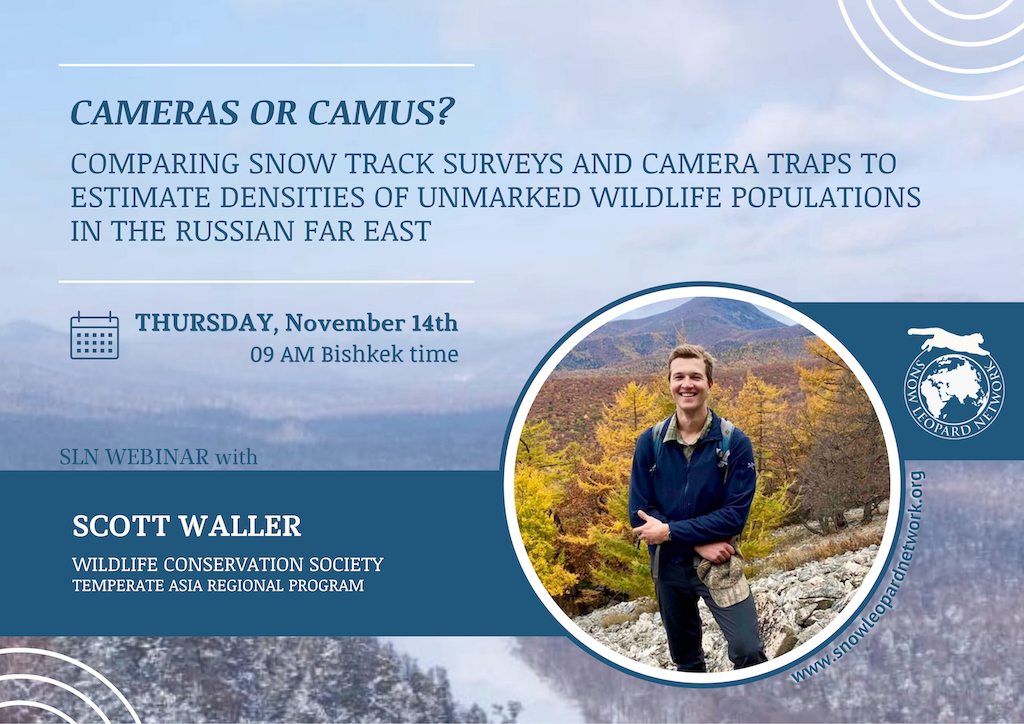Our webinar presentation with Scott Waller, from Wildlife Conservation Society’s Temperate Asia regional program.
Population density is a valuable metric used to manage wildlife populations. In the Russian Far East, wildlife managers use the Formozov-Malyushev-Pereleshin (FMP) snow tracking method to estimate densities of ungulate prey for hunting management and Amur tiger (Panthera tigris altaica) conservation, since the carrying capacity of a landscape for tigers is closely linked with the density of available prey biomass. Yet, climate change and challenges with survey design call into question the reliability of the FMP, and wildlife managers are looking for alternative methods. Camera traps offer a promising new tool, but their suitability for monitoring prey remains unclear.
Working with the Wildlife Conservation Society and Sikhote-Alin Biosphere Reserve, Scott and colleagues applied a rigorous scientific design of random sampling to estimate densities of preferred prey of the Amur tiger using both FMP and camera-based methods. They also converted these density estimates to prey biomass following conventions in the literature. They found that, while both track surveys and camera traps provided consistent estimates of density, cameras required more resources and effort to implement. They also consider the demands of random sampling of the landscape as restrictive, especially in other parts of the tiger’s range with more challenging terrain. Finally, they found that insignificant differences in density estimates between methods still led to large differences in prey biomass, emphasizing the need for more robust methods.

